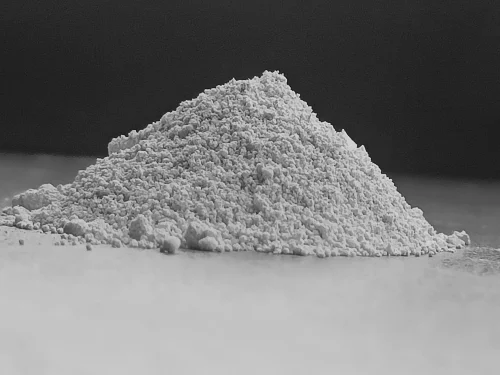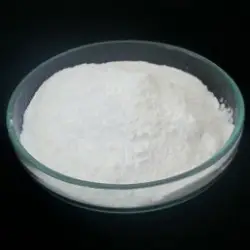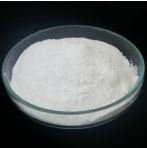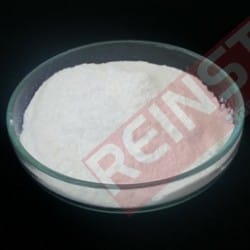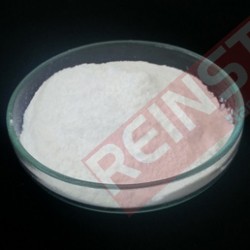Understanding the Unique Properties of Aluminum Oxide Nanopowder
Before diving into the diverse aluminum oxide nanopowder applications, it's crucial to understand what makes this material so extraordinary. Aluminum oxide, or alumina (Al₂O₃), is naturally abundant and renowned for its exceptional hardness and chemical stability. When processed into nanopowder form, these inherent qualities are significantly amplified, and new properties emerge due to its high surface-to-volume ratio and quantum effects. The properties of aluminum oxide nanopowder include superior mechanical strength, excellent thermal conductivity, high electrical insulation, and remarkable resistance to corrosion and wear. Its nanoscale size allows for enhanced dispersion, greater surface reactivity, and the ability to form dense, uniform structures, making it an ideal candidate for various advanced technologies. These unique attributes are the foundation for the numerous innovative uses of aluminum oxide we observe today across a multitude of sectors.
Revolutionizing Energy Storage: Nano Aluminum Oxide in Lithium Batteries and Solar Cells
The global shift towards sustainable energy sources has placed immense pressure on developing more efficient and safer energy storage and conversion technologies. Here, nano aluminum oxide in lithium batteries plays a pivotal role. Nanoparticles of alumina are increasingly used as a crucial component in battery separators, enhancing their thermal stability and mechanical strength. This prevents short circuits and improves overall battery safety, a critical concern for consumer electronics and electric vehicles. Furthermore, aluminum oxide nanopowder applications extend to electrode materials, where it can improve cycling stability and rate capability, leading to longer-lasting and faster-charging batteries. In the realm of renewable energy, nano aluminum oxide in solar cells is utilized to create anti-reflective coatings and passivation layers. These ultra-thin layers reduce light reflection, allowing more sunlight to be absorbed by the photovoltaic material, thereby significantly boosting the efficiency of solar panels. This dual impact on energy storage and conversion underscores the material's importance in advancing green technologies.
Advanced Electronics and Thermal Management: Nano Alumina for Electronics
The miniaturization and increasing power density of electronic devices demand materials with exceptional thermal management capabilities and superior dielectric properties. This is where nano alumina for electronics shines. The high thermal conductivity of aluminum oxide nanopowder for thermal management makes it an excellent filler material in thermal interface materials (TIMs), heat sinks, and potting compounds. It efficiently dissipates heat generated by microprocessors, LEDs, and power modules, preventing overheating and extending device lifespan. Beyond thermal management, the excellent electrical insulation properties of nano alumina are crucial for dielectric layers in capacitors, substrates for integrated circuits, and insulating coatings for wires and cables. Its uniform particle size and high purity ensure reliability and performance in sensitive electronic components. These sophisticated applications of nano aluminum oxide are fundamental to the continuous innovation in the electronics industry, enabling faster, smaller, and more reliable gadgets.
Enhancing Surfaces: Aluminum Oxide in Coatings and Adhesives
The demand for materials with enhanced durability, scratch resistance, and protective properties has led to widespread aluminum oxide in coatings. By incorporating aluminum oxide nanopowder into paints, varnishes, and clear coats, manufacturers can significantly improve the wear resistance, hardness, and corrosion protection of surfaces. This is particularly valuable in automotive, aerospace, and industrial applications where components are exposed to harsh environments or mechanical abrasion. Examples include scratch-resistant coatings for eyeglasses and screens, anti-corrosion layers for metal parts, and high-performance finishes for flooring. The nanoscale particles create a dense, uniform protective layer that is both thin and highly effective. Furthermore, the use of aluminum oxide in adhesives is gaining traction. Adding nano alumina can improve the mechanical strength, thermal conductivity, and bond integrity of various adhesive formulations, making them suitable for demanding structural applications in industries ranging from construction to aerospace. These specific aluminum oxide nanopowder applications demonstrate its versatility in surface engineering.
Catalysis and Environmental Solutions: Alumina Nanopowder for Catalysts and Water Purification
The high surface area and tunable porosity of aluminum oxide nanopowder make it an exceptional material for catalytic applications and environmental remediation. As a support material, alumina nanopowder for catalysts provides a stable and highly dispersed platform for active catalytic components, such as noble metals. This enhances catalytic activity, selectivity, and stability in a wide range of chemical reactions, including petroleum refining, automotive exhaust treatment, and chemical synthesis. The unique surface chemistry of nano alumina also facilitates its role in environmental applications. Aluminum oxide for water purification is highly effective as an adsorbent for removing heavy metals, fluoride, arsenic, and organic pollutants from contaminated water sources. Its large surface area and specific adsorption sites enable efficient capture of impurities, contributing significantly to cleaner water supplies. Similarly, in broader aluminum oxide in environmental remediation efforts, it's used in air filtration systems and soil treatment, showcasing its critical role in addressing pressing environmental challenges.
Biomedical Innovations: Aluminum Oxide in Biomedical Applications
The biocompatibility, mechanical strength, and inertness of aluminum oxide nanopowder make it an ideal material for a variety of biomedical and healthcare applications. Aluminum oxide in biomedical applications includes its use in dental ceramics for crowns and bridges, providing both aesthetic appeal and robust durability. It is also found in orthopedic implants, such as hip and knee replacements, where its wear resistance and biocompatibility are crucial for long-term success and patient comfort. The nanoscale nature allows for better integration with biological systems and can be engineered for targeted drug delivery systems. Additionally, alumina nanoparticles in cosmetics are utilized for their abrasive properties in exfoliating scrubs and as UV filters in sunscreens due to their ability to scatter light. The ongoing research into the precise control of particle size and surface functionalization continues to expand the horizons for innovative uses of aluminum oxide in medical diagnostics, drug delivery, and therapeutic devices.
Transforming Manufacturing: Alumina Powder in 3D Printing and Advanced Ceramics
Additive manufacturing, commonly known as 3D printing, is revolutionizing how complex components are produced. The introduction of alumina powder in 3D printing has opened new avenues for creating high-performance ceramic parts with intricate geometries. This allows for the fabrication of custom tools, intricate prototypes, and functional components with superior mechanical and thermal properties that are difficult to achieve with traditional manufacturing methods. The ability to precisely control the structure at the micro-level leads to enhanced material performance. Furthermore, aluminum oxide in ceramics has been a cornerstone for centuries, but with nanopowder, its capabilities are significantly amplified. Nano alumina is used to produce advanced ceramics with exceptional hardness, strength, and thermal shock resistance, vital for applications in aerospace, defense, and industrial tooling. These breakthroughs demonstrate how aluminum oxide in advanced technologies is pushing the boundaries of what's possible in materials science and manufacturing processes.
Strengthening Materials: Nano Alumina for Reinforced Materials and Other Uses
The exceptional mechanical properties of aluminum oxide nanopowder make it an excellent choice for reinforcing various materials, leading to the development of next-generation composites. Nano alumina for reinforced materials significantly enhances the strength, stiffness, and creep resistance of polymers, metals, and other ceramics. This results in lighter, stronger, and more durable components for industries ranging from automotive to construction. For instance, incorporating nano alumina into plastics can create high-performance engineering plastics with improved wear resistance and dimensional stability. In the oil and gas sector, aluminum oxide for oil and gas applications is used in proppants for hydraulic fracturing, where its strength and spherical shape help keep fractures open, maximizing hydrocarbon extraction. Its abrasive properties are also leveraged in polishing compounds and grinding media. The continuous exploration of these diverse aluminum oxide nanopowder applications solidifies its status as a foundational material for future technological advancements.
Frequently Asked Questions about Aluminum Oxide Nanopowder
What are the primary advantages of using aluminum oxide nanopowder over traditional alumina?
The primary advantages of aluminum oxide nanopowder stem from its nanoscale size, which imparts a significantly higher surface area, enhanced reactivity, and superior mechanical properties. This allows for improved dispersion in composites, better sintering at lower temperatures, and the creation of materials with higher hardness, strength, and thermal conductivity compared to micron-sized alumina. These unique attributes enable its use in cutting-edge aluminum oxide in advanced technologies where conventional materials fall short.
How does nano aluminum oxide enhance lithium-ion battery performance?
Nano aluminum oxide in lithium batteries primarily enhances performance by improving the safety and stability of the battery separator. It increases the thermal resistance and mechanical strength of the separator, preventing dendrite formation and internal short circuits. Additionally, nano alumina can be incorporated into electrode materials to improve ion diffusion and electron transport, leading to higher capacity, faster charging rates, and extended cycle life, making it a key component in next-generation energy storage solutions.
Can aluminum oxide nanopowder be used in water purification?
Yes, aluminum oxide for water purification is a highly effective adsorbent. Its high surface area and specific surface chemistry allow it to efficiently capture and remove various pollutants from water, including heavy metals like arsenic and lead, fluoride, phosphates, and certain organic contaminants. This makes it a valuable material for developing advanced filtration systems and contributes significantly to aluminum oxide in environmental remediation efforts, ensuring access to cleaner and safer drinking water.
What makes aluminum oxide nanopowder suitable for biomedical applications?
The suitability of aluminum oxide in biomedical applications is attributed to its exceptional biocompatibility, high hardness, wear resistance, and chemical inertness. These properties make it ideal for use in dental implants, orthopedic prosthetics, and drug delivery systems. It minimizes adverse reactions with biological tissues and provides the mechanical durability required for long-term in-vivo performance, making it a trusted material in medical device manufacturing.
What are some innovative uses of aluminum oxide in 3D printing?
Alumina powder in 3D printing is enabling the fabrication of complex ceramic components with superior properties. It's used in techniques like binder jetting, stereolithography (SLA), and fused deposition modeling (FDM) of ceramic-filled filaments. This allows for the creation of intricate parts with high strength, hardness, and thermal stability for aerospace, defense, and industrial tooling. The precision offered by 3D printing combined with the robust properties of aluminum oxide nanopowder opens up new possibilities for advanced manufacturing.
The Future Landscape of Aluminum Oxide Nanopowder Applications
The journey of aluminum oxide nanopowder is far from over. As research and development continue, we can anticipate even more groundbreaking innovative uses of aluminum oxide emerging across various sectors. The ongoing advancements in nanotechnology will further refine the synthesis and functionalization of nano alumina, enabling tailored properties for highly specific applications. We may see its increased integration into smart materials, advanced sensors, and even more sophisticated energy systems. The material's inherent strength, thermal stability, and chemical inertness, coupled with its nanoscale advantages, position it as a critical enabler for future technological leaps. From enhancing the performance of next-generation batteries and electronics to providing sustainable solutions for environmental challenges, the full potential of applications of nano aluminum oxide is still being unlocked, promising a future of innovation and efficiency.
Conclusion
In summary, aluminum oxide nanopowder is a material of immense importance, driving innovation across a multitude of industries. Its exceptional properties of aluminum oxide nanopowder, including superior mechanical strength, thermal conductivity, electrical insulation, and high surface area, make it indispensable for advanced technological applications. We have explored its pivotal role in energy storage with nano aluminum oxide in lithium batteries and solar cells, its critical function in nano alumina for electronics and thermal management, and its transformative impact on aluminum oxide in coatings and reinforced materials. Furthermore, its contributions to alumina nanopowder for catalysts, aluminum oxide for water purification, aluminum oxide in biomedical applications, and alumina powder in 3D printing underscore its unparalleled versatility. As industries continue to push the boundaries of performance and efficiency, the demand for this remarkable nanomaterial will only grow, solidifying its position as a cornerstone of modern material science and a key ingredient for future advancements. The expansive range of aluminum oxide nanopowder applications truly highlights its status as a material for the future.
Related Products
-
Sale!

Aluminium Oxide – Nanopowder, gamma phase
₹6,984.00 Original price was: ₹6,984.00.₹4,233.00Current price is: ₹4,233.00.
-
Sale!

Aluminium Oxide – Nanopowder, Theta Phase
₹6,249.00 Original price was: ₹6,249.00.₹3,787.00Current price is: ₹3,787.00.
-
Sale!

Aluminium Oxide (Gamma)
₹33,525.00 Original price was: ₹33,525.00.₹20,318.00Current price is: ₹20,318.00.
-
Sale!

Aluminium Oxide, (Alpha Phase)
₹8,087.00 Original price was: ₹8,087.00.₹4,901.00Current price is: ₹4,901.00.
-

High Quality Nano Alumina Particles For Lithium Battery
-
Sale!

Nano Aluminium Oxide (Theta Phase)
₹16,762.00 Original price was: ₹16,762.00.₹10,159.00Current price is: ₹10,159.00.
-
Sale!

Nano Aluminum Oxide
₹27,072.00 Original price was: ₹27,072.00.₹16,407.00Current price is: ₹16,407.00.
-
Sale!

Nano Aluminum Oxide for Lithium Battery
₹14,248.00 Original price was: ₹14,248.00.₹8,635.00Current price is: ₹8,635.00.
-

Nano aluminum oxide, 10-20nm
This website is for helping you to identify the right products, do send us your request if you are interested in a product for facilitating the purchase.
[email protected]
The Images shown/ used are for representation purpose only. Dismiss
